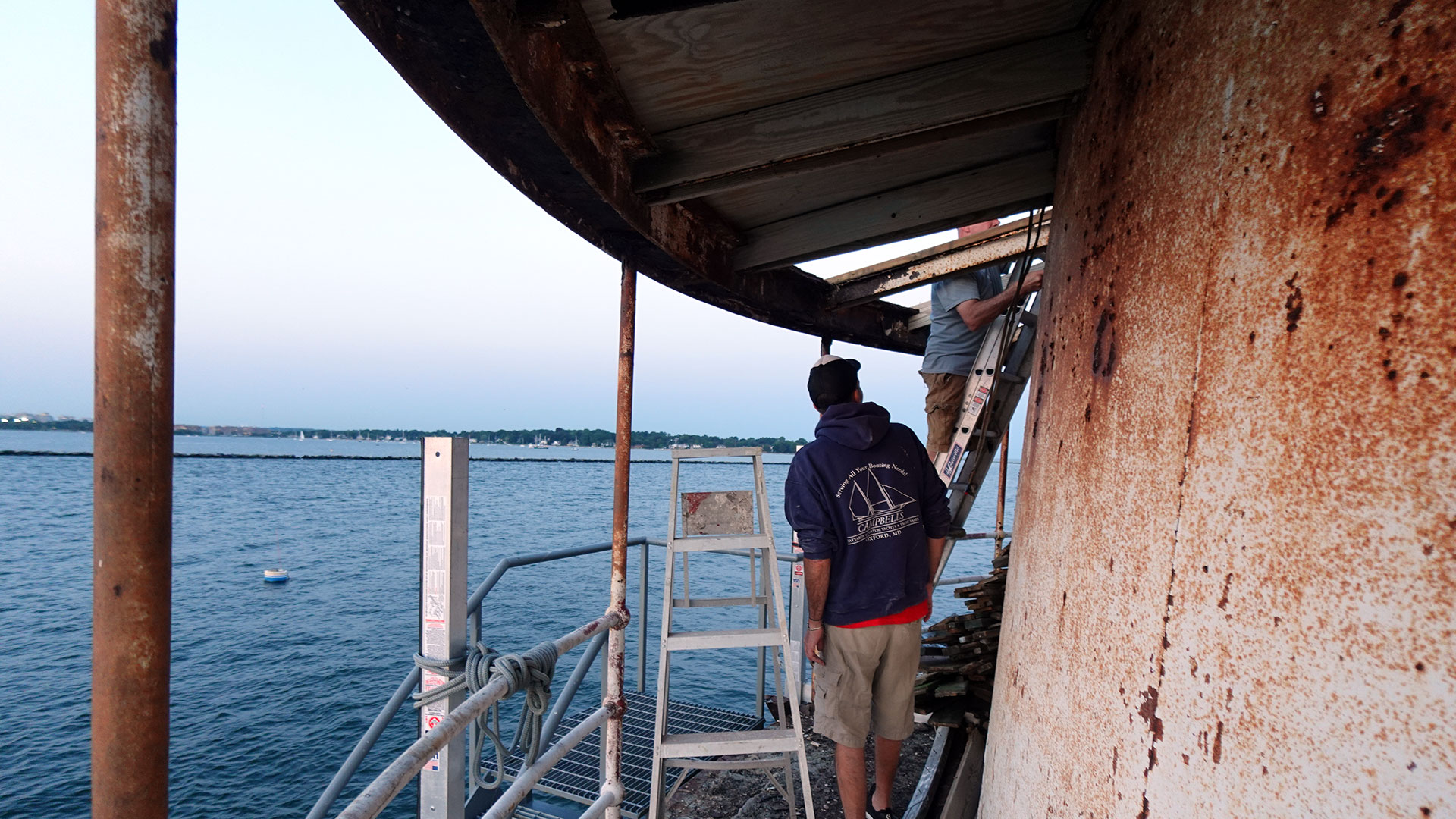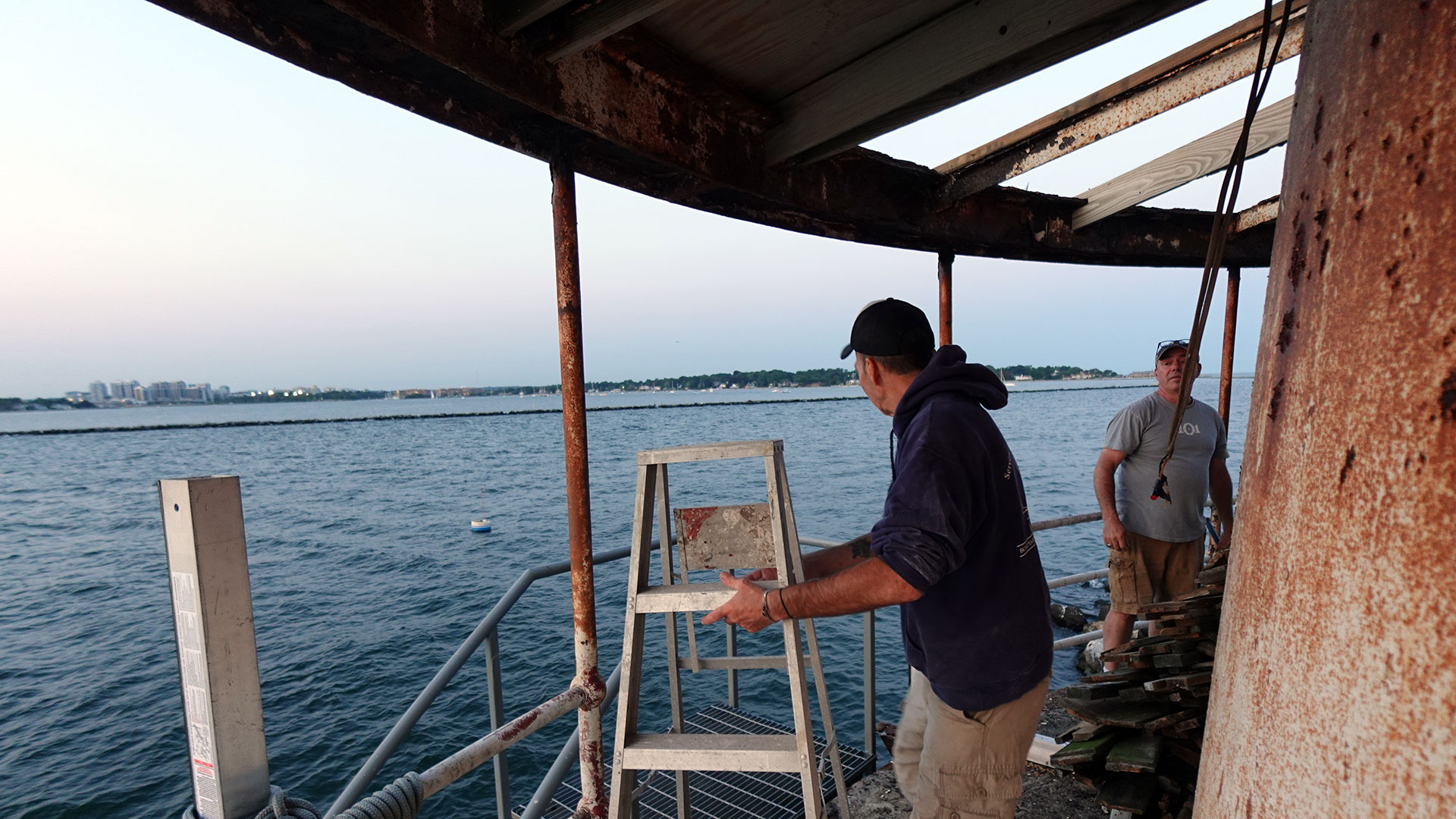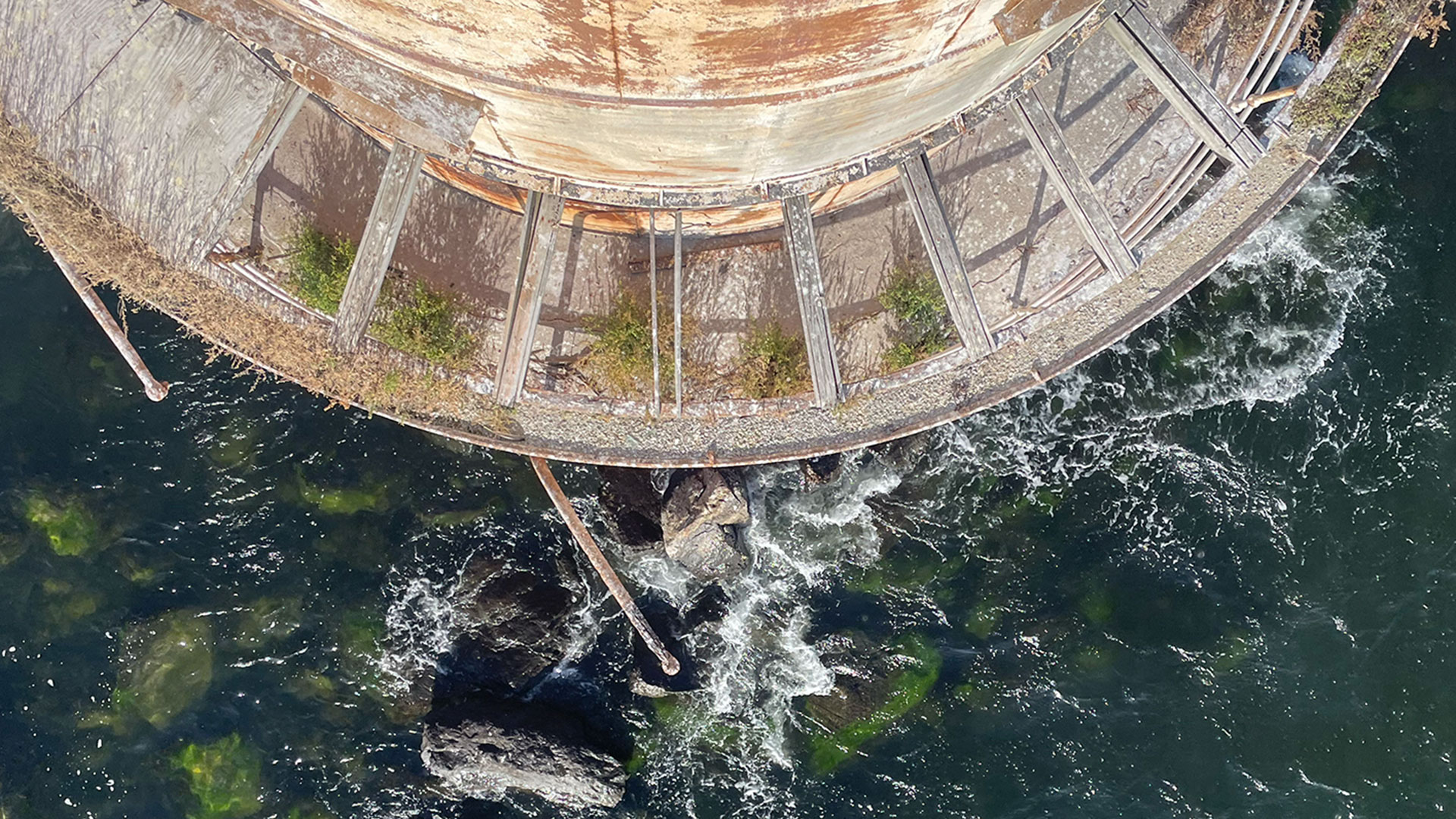Built in 1882, the Stamford Harbor Lighthouse stands as a classic example of a sparkplug lighthouse, a design common among American lighthouses constructed between the late 19th and early 20th centuries. Traditional sparkplug lighthouses included a canopy over the main galley deck, both to shield it from harsh elements and to collect fresh rainwater for the lighthouse’s cisterns. This canopy structure typically features a cast iron gutter supported by steel brackets and is topped with steel roofing.

Workers Inspect Canopy Structure on Stamford Harbor Lighthouse
Today, it’s rare to find an original canopy still intact on a sparkplug lighthouse, as they’re often removed during previous restoration efforts. During our initial inspection of the Stamford Harbor Lighthouse, we were thrilled to discover that its canopy remained structurally sound. This presents a unique opportunity to preserve both the character and history of the lighthouse.

Workers Remove Wood Roofing from Stamford Lighthouse Canopy
Now that we’ve secured access to the lighthouse and completed a thorough cleanup, we’re excited to begin the detailed restoration of this design feature, integral to the historical character and architectural integrity of this Stamford landmark.
Canopy restoration efforts are already underway, and will focus on several key areas:
- Removing the wood roofing, which replaced the original steel roof in the 1980s and has since rotted over the last 40 years.
- Assessing the structural integrity of the steel stanchions that support the heavy cast iron gutter.
- Restoring the cast iron gutter by removing rust and applying a protective coating.
- Replacing the 31 steel brackets that will support the new roof.
- Evaluating materials for the new roofing, balancing durability and historical accuracy (considering steel and aluminum).
- Installing and sealing the new roof to ensure long-term resilience against coastal elements.

It is Rare to Find an Original Canopy Still Intact on a Sparkplug Lighthouse
The canopy restoration is a substantial undertaking that will continue through the winter and spring, with completion targeted for the summer of 2025. Each step brings us closer to reviving this landmark’s historical grandeur for generations to come.
Built in 1882, the Stamford Harbor Lighthouse stands as a classic example of a sparkplug lighthouse, a design common among American lighthouses constructed between the late 19th and early 20th centuries. Traditional sparkplug lighthouses included a canopy over the main galley deck, both to shield it from harsh elements and to collect fresh rainwater for the lighthouse’s cisterns. This canopy structure typically features a cast iron gutter supported by steel brackets and is topped with steel roofing.

Workers Inspect Canopy Structure on Stamford Harbor Lighthouse
Today, it’s rare to find an original canopy still intact on a sparkplug lighthouse, as they’re often removed during previous restoration efforts. During our initial inspection of the Stamford Harbor Lighthouse, we were thrilled to discover that its canopy remained structurally sound. This presents a unique opportunity to preserve both the character and history of the lighthouse.

Workers Remove Wood Roofing from Stamford Lighthouse Canopy
Now that we’ve secured access to the lighthouse and completed a thorough cleanup, we’re excited to begin the detailed restoration of this design feature, integral to the historical character and architectural integrity of this Stamford landmark.
Canopy restoration efforts are already underway, and will focus on several key areas:
- Removing the wood roofing, which replaced the original steel roof in the 1980s and has since rotted over the last 40 years.
- Assessing the structural integrity of the steel stanchions that support the heavy cast iron gutter.
- Restoring the cast iron gutter by removing rust and applying a protective coating.
- Replacing the 31 steel brackets that will support the new roof.
- Evaluating materials for the new roofing, balancing durability and historical accuracy (considering steel and aluminum).
- Installing and sealing the new roof to ensure long-term resilience against coastal elements.

It is Rare to Find an Original Canopy Still Intact on a Sparkplug Lighthouse
The canopy restoration is a substantial undertaking that will continue through the winter and spring, with completion targeted for the summer of 2025. Each step brings us closer to reviving this landmark’s historical grandeur for generations to come.



